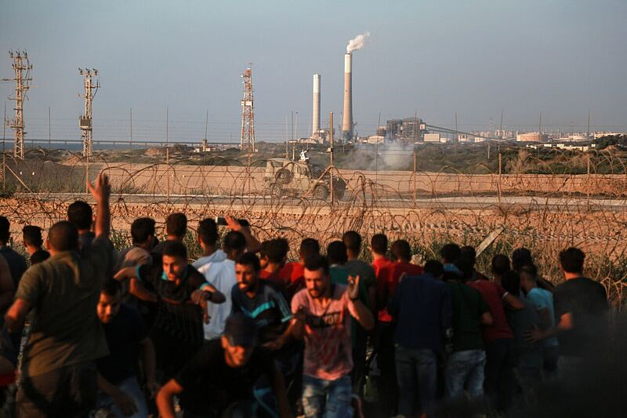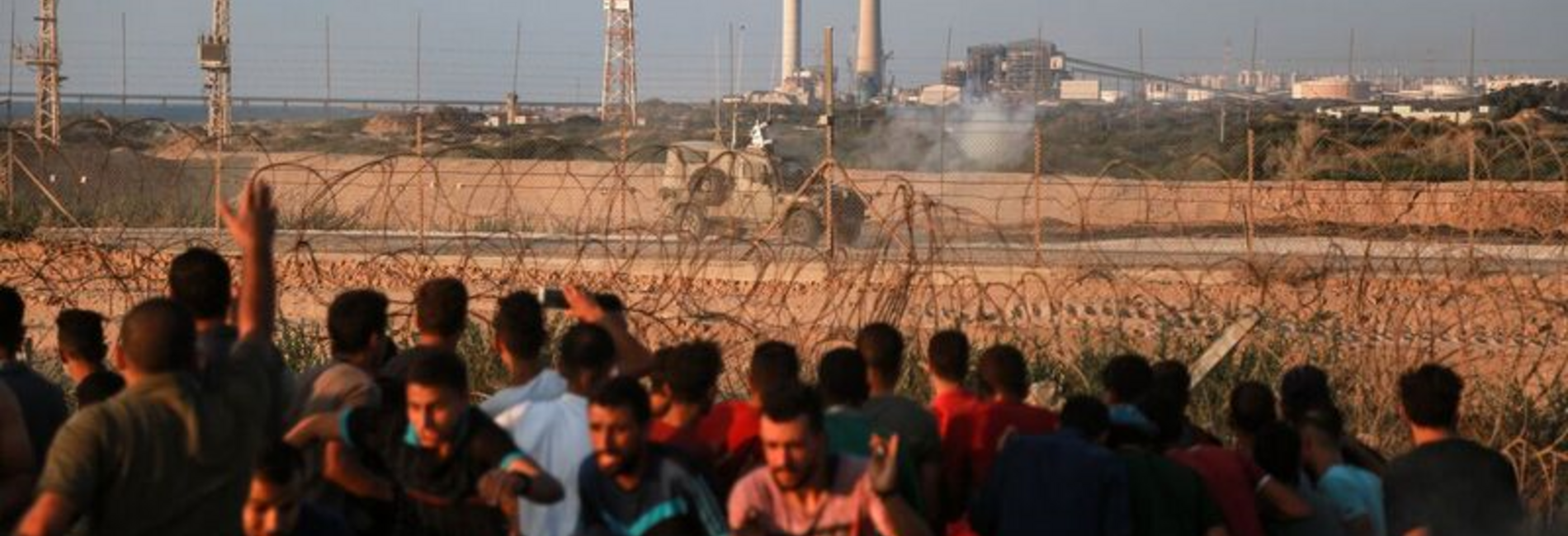Overview: September 2018
Participants in the 27 September meeting of the Ad Hoc Liaison Committee (AHLC), the minister-level gathering of OPT donors, in New York, were unanimous regarding the disastrous humanitarian situation in the Gaza Strip. Among other remarks, The World Bank warned that the Gaza economy “is in free fall registering minus 6 percent growth in the first quarter of 2018, and an unemployment rate of 53 percent (over 70 percent for youth) … Given that every second person in Gaza lived below the poverty line before these latest developments, the deterioration is alarming.” [1]
The deterioration during 2017 and 2018 has been driven, according to the World Bank, by a sharp decline in the transfers of money to Gaza, the territory’s almost exclusive source of income following the depletion of the productive sector as a result of over a decade of blockade, imposed by Israel citing security concerns. The decline in ‘transfers’ included, primarily, a reduction of the Palestinian Authority’s budget allocated to Gaza, in the context of the internal divide; a limited disbursement of international donor pledges for reconstruction; a cut in development aid by the United States government; and a decline in the funding of humanitarian assistance.

The first of this Humanitarian Bulletin’s articles provides an overview of humanitarian funding so far in 2018, which, indeed, is at an all-time low and one of the worst funded operations globally, with only 29 per cent of the $539.7 million appealed for in 2018 raised by end September, compared to 47 and 50 per cent by the end of 2017 and 2016 respectively. While the funding gaps are mainly driven by the decline in contributions for UNRWA, whose projects constitute over half of the 2018 Humanitarian Response Plan (HRP), nearly all agencies are more poorly-funded than in previous years. To meet immediate humanitarian needs, on 22 September, the Humanitarian Coordinator (HC) for the OPT launched an $8.3 million allocation by the OPT Humanitarian Fund, to allow the implementation of some critical HRP projects.[2] On a positive note, on 27 September, UNRWA received multiple additional pledges from various member states for a total of $122 million, which, once disbursed, will reduce the Agency’s deficit for 2018 in all of its areas of operation in the Middle East to $64 million.
An important dimension of the hardship experienced by Gaza’s residents, addressed in another of this Bulletin’s articles, is their isolation from the rest of the OPT and the external world. Only a tiny portion of residents are eligible for exit permits to leave the enclave via the Israeli-controlled Erez crossing, including patients referred for medical treatment unavailable in Gaza. In the first half of 2018, less than 60 per cent of permit applications by patients were approved, with the majority of those denied or delayed being given no specific reasons. On the other hand, the Egyptian-controlled Rafah crossing has been almost continuously open since May 2018, partially restoring a potential gateway for the broader population. However, this development has been impaired by the reduced number of passengers allowed through every day (about 350), the obscure criteria used for selecting passengers, the long waiting times at the crossing, and the multiple security checks and difficulties incurred by passengers on the road to Cairo and back to Gaza.
As highlighted in previous Bulletins, the massive rise in casualties in the context of the ‘Great March of Return’ demonstration has overwhelmed Gaza’s already fragile health sector and generated additional needs. During September, in the context of growing hardship and hopelessness, the scope of demonstrations increased and are now taking place almost daily, including night gatherings near the fence, attempts to break the naval blockade, and demonstrations near the Erez passenger crossing. Along with more frequent throwing of explosive devices at Israeli forces and attempts to breach the fence by some demonstrators, these developments have resulted in the killing of 23 Palestinians, including 8 children, and the injury of another 1,240 during the month. Following the killing of seven demonstrators, including two children on 28 September, the HC called on “Israel, Hamas and all other actors with the ability to influence the situation, to take action now to prevent further deterioration and loss of life.”
To alleviate the humanitarian catastrophe unfolding in Gaza, at the AHLC, the UN presented a package of urgent infrastructure projects to improve the provision of water, electricity and health, while generating income and employment in a manner that would have quick impact on the ground within a 6-12-month time-frame. While all these projects are planned and agreed, they are awaiting the necessary funding to be implemented, and in any case would not replace immediate humanitarian aid urgently needed.
[1] World Bank, Economic Monitoring Report to the Ad Hoc Liaison Committee, 27 September 2018, para. 1.
[2] The Humanitarian Fund is a pooled fund managed by OCHA on behalf of the Humanitarian Coordinator. For further details, see here.










